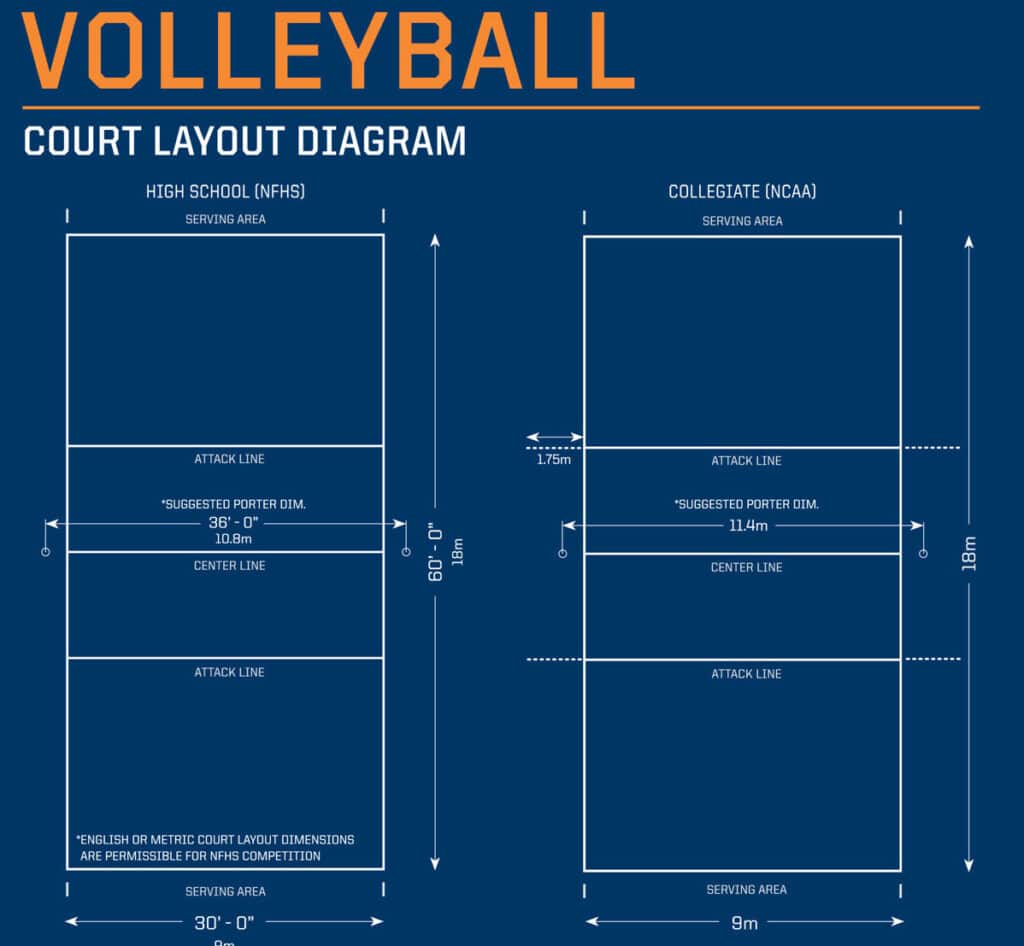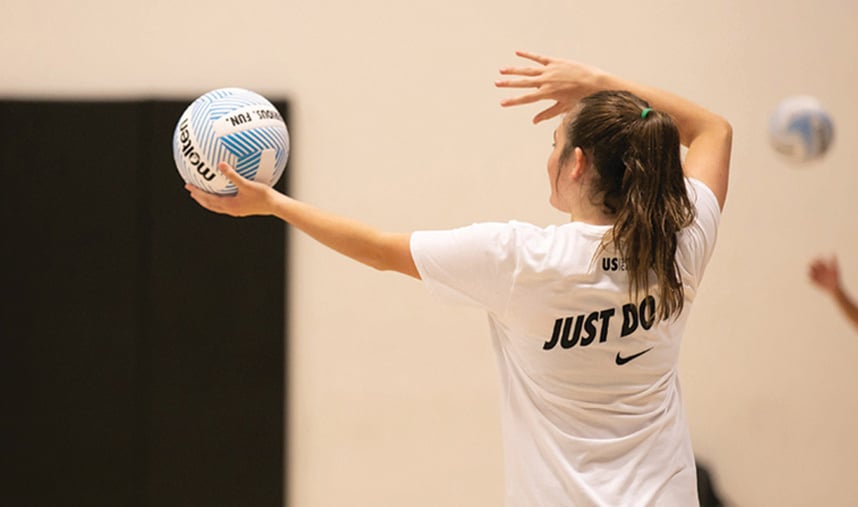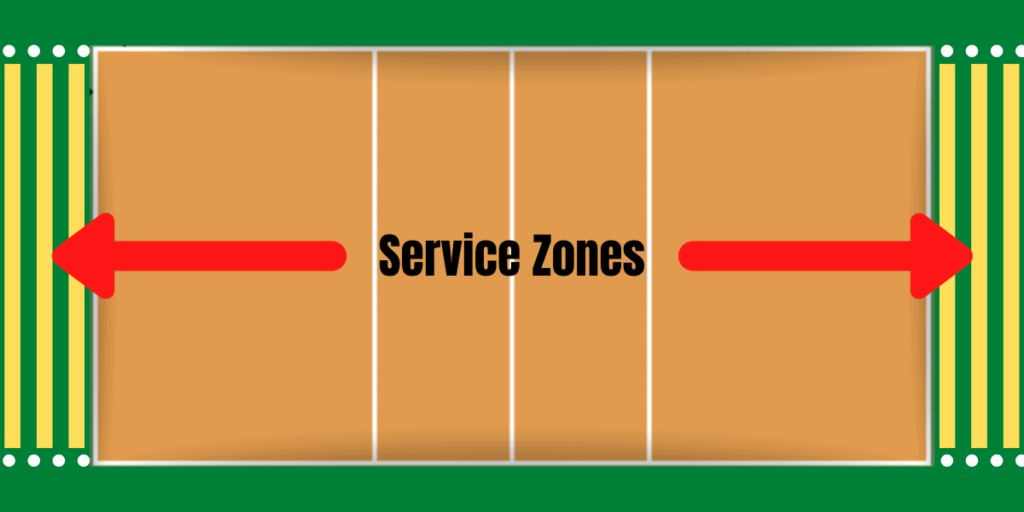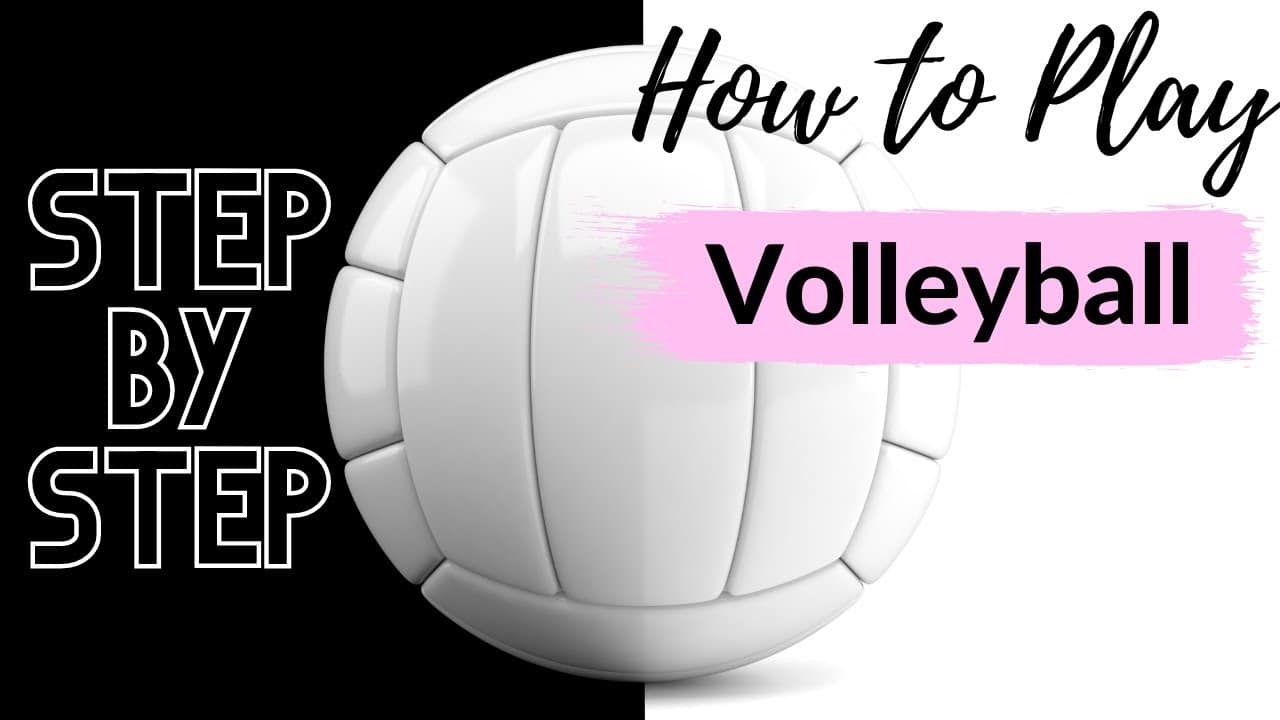Volleyball, often dubbed as the “fast-paced sport with a net,” is an exhilarating game that combines athleticism, teamwork, and strategic thinking.
Played on a rectangular court divided by a net, the objective is to send a ball over the net and into the opponent’s court, aiming to score points.
With its dynamic rallies and intense spikes, volleyball has become a favorite among sports enthusiasts worldwide.
Importance of Understanding the Rules
To truly enjoy the game and contribute to your team’s success, it is crucial to have a solid grasp of the rules governing volleyball.
Understanding the regulations not only enhances your performance but also fosters smoother team coordination.
Whether you are a beginner or a seasoned player, having a comprehensive knowledge of the rules ensures fair play, sportsmanship, and an overall enriching experience on the court.
How To Play Volleyball
In this guide, we’ll delve into the fundamental aspects of playing volleyball, breaking down the rules and strategies that make the game so captivating.
Volleyball Basics
Volleyball, a game of precision and teamwork, unfolds on a rectangular court with specific dimensions. Understanding the basics is crucial, from the court layout to the roles of players.
Let’s delve into the fundamentals that lay the foundation for a thrilling volleyball match.
Overview of the Volleyball Court and Dimensions
The volleyball court is a rectangular space, measuring 9 meters by 18 meters in the USA. It is divided into two halves by a net that stands at a height of 7 feet and 11 inches for men and 7 feet and 4 inches for women.

The court is marked with lines designating the end line, serving area, 10-foot line, and the three-meter line. Understanding the dimensions and markings of the court is fundamental for players to navigate and strategize effectively during a match.
Number of Players on the Court
In volleyball, each team consists of six players on the court simultaneously. However, it’s essential to note that a team can have more than six players on its roster.

The players are divided into two main sections during play: the front row and the back row. The front row typically comprises hard-hitting offensive players, while the back row is primarily defensive.
The dynamic interaction between these positions creates the fluid and strategic nature of the game.
Positions and Roles of Players
- Front Row Players: a. Outside Hitter: A powerful attacker usually positioned on the left side. b. Middle Blocker: Positioned in the center, focuses on both offense and defense. c. Opposite Hitter: Similar to the outside hitter but positioned on the right side.
- Back Row Players: a. Left Back: Plays a defensive role in the back left area of the court. b. Libero: A specialized defensive player who wears a different jersey, excelling in passing and digging. c. Right Back: Plays a defensive role in the back right area of the court.
The setter, a versatile position, orchestrates plays and moves between the front and back rows.
Player rotations, either clockwise or in specific patterns like the 5-1, 6-2, or 4-2, add an extra layer of complexity to team dynamics. Understanding these player positions and their roles is fundamental for effective team coordination and successful gameplay.
Serving and Receiving
Serving and receiving are the gateways to volleyball action. Explore the intricacies of delivering a legal service, the serving area’s dynamics, and the art of receiving with finesse.

Additionally, grasp the essential concept of rotations, a strategic dance that keeps the game flowing seamlessly between serves and rallies.
Explanation of the Service and Serving Area
The service in volleyball initiates the action, and it begins with a player serving the ball from a designated area behind the back boundary line.

The serving area is crucial, and players must stand outside this zone to execute a proper serve.
In the USA, the serving area extends 10 feet back from the net. The player tosses the ball into the air and strikes it to send it over the net and into the opponent’s court.
Rules and Techniques for a Legal Serve
A legal serve involves striking the ball cleanly over the net, with specific rules to ensure fair play.
The server must avoid stepping over the back boundary line during the serve, and the ball must pass over the net, landing within the opposing team’s court.
Players often employ various techniques, including the topspin and float serve, to add unpredictability to their serves and challenge the opponent’s reception.
Receiving the Serve and Passing Techniques
Receiving the serve, commonly known as passing, is a critical skill in volleyball. Players in the back row aim to pass the incoming serve accurately to set up the team’s offensive play.

The forearm pass, or “bump,” is the primary technique used in passing. The goal is to control the ball’s momentum and deliver a precise pass to the setter.
Teams are allowed three touches to return the ball, emphasizing the importance of a solid pass in setting up successful plays.
Overview of Rotations
Rotations in volleyball play a significant role in maintaining fairness and strategic balance during a match. Players rotate in a clockwise direction after winning a rally.
This movement ensures that players take turns in different positions on the court, preventing a team from consistently exploiting a particular offensive or defensive setup.
Understanding rotations, including variations like the 5-1, 6-2, or 4-2, is crucial for players to adapt to different scenarios and contribute effectively to their team’s success.
Successful rotations enhance the team’s ability to cover the court efficiently and execute well-coordinated plays.
Scoring in Volleyball
Unlock the scoring secrets of volleyball, where precision meets strategy. Discover the one-point-at-a-time system, the dynamics of sets, and the crucial bump-set-spike sequence.
Unravel the suspense of winning by a margin of two points, adding a layer of intensity to each set. Dive into the scoring intricacies that make volleyball an exhilarating sport.
Points System in Volleyball
Volleyball employs a straightforward points system, where each rally or volley results in a point for the winning team.
Must Read:
Unlike sports with varied point values like basketball, each successful play in volleyball earns one point. This simplicity allows for easy scorekeeping and a clear understanding of the match’s progress.
Sets and Winning Conditions
A volleyball match is divided into sets, and the standard format is best-of-five sets. To win a set, a team must reach 25 points first, but with a crucial caveat – the team must win by a margin of at least two points.
In some instances, a fifth set might be played to 15 points. This format ensures that the winning team demonstrates a clear dominance, preventing close victories due to luck.
Scoring Operations: Bump, Set, Spike
The sequence of operations known as “bump, set, spike” is fundamental to scoring in volleyball.
- Bump (Pass): The first touch, often using the forearms, aims to pass the ball accurately to set up the play.
- Set: The second touch involves a set, where the player uses their fingers and wrists to position the ball for an attack near the net. This play sets the stage for the spike.
- Spike (Attack): The third touch is the attack or spike, where a player jumps and forcefully hits the ball over the net into the opponent’s court. The goal is to make the ball difficult to return, ideally scoring a point.
This seamless coordination between teammates in executing these three operations is crucial for scoring effectively and outmaneuvering the opposing team’s defense.
Winning by Two Points Rule
One unique aspect of volleyball scoring is the “winning by two points” rule. If a set reaches a score of 24-24, the game continues until one team manages to secure a two-point advantage.
For example, the winning score might be 26-24 or higher. This rule adds an element of suspense and ensures that the winning team not only accumulates points but also maintains a clear lead, enhancing the competitive nature of the game.
Violations and Penalties
In the world of volleyball, adherence to rules is paramount. Here you can learn about common violations that can cost your team points, from stepping over the baseline to illegal ball handling. Understand the consequences of these infractions and delve into the impact of faults on the game’s momentum.
Navigating the fine line between fair play and penalties is key to success on the volleyball court.
Common Violations in Volleyball
Volleyball, like any sport, has a set of rules that players must adhere to during a match. Common violations include:
- Ball Out of Bounds: Allowing the ball to land on your team’s side of the court results in a point for the opposing team.
- Foot Faults during Serving: Stepping over the back boundary line while serving is considered a fault, resulting in the loss of the serve and a point for the opponent.
- Net Touching: Touching the net during play is prohibited. This violation can occur while blocking, attacking, or simply reaching over the net. It results in a point for the other team.
- Double Hit or Lift: A player is not allowed to hit the ball twice consecutively, nor can they lift or carry the ball. Doing so leads to a fault and the loss of the point.
- Antenna Violation: Hitting the ball outside or on the antenna (the vertical rods at the net’s edges) is considered out of bounds.
Consequences of Violations
Violations in volleyball come with consequences that impact the flow of the game and the team’s overall performance. Consequences may include:
- Point Loss: Most violations result in the opposing team earning a point. This can quickly change the score and momentum of the match.
- Loss of Serve: Violations during serving, such as foot faults or improper technique, lead to a loss of serve, giving the opposing team the chance to serve.
- Rotation Errors: Failure to adhere to rotation rules can lead to a point awarded to the other team, affecting the team’s strategic positioning on the court.
Understanding Faults and Their Impact
Faults in volleyball can disrupt the rhythm and strategy of a team. Knowing the specific faults and their impact is crucial for players and coaches.
Whether it’s a net violation that costs a point or a double hit that results in a loss of possession, understanding these faults is essential for maintaining a fair and competitive game.
Players must stay vigilant to avoid committing these infractions and, conversely, be quick to capitalize on opponents’ mistakes to gain an advantage.
Special Concepts
Explore the unique elements that add depth to volleyball gameplay. From the significance of antennas, guiding the playable length across the net, to the distinct heights of nets in men’s and women’s volleyball.
Dive into the world of Libero, a player with unique substitution privileges, and understand the rules that govern this specialized position.
These special concepts contribute to the nuanced strategy and dynamics of volleyball.
Antennas and Their Significance
Antennas play a crucial role in volleyball, defining the playable length across the net.
These vertical rods, usually colored and extending upwards from the net’s edges, serve as a boundary marker. Hitting the ball outside or on the antennas is considered out of bounds, resulting in a point for the opposing team.
Understanding the significance of antennas helps players gauge the court’s boundaries and make strategic plays within the allowable space.
Different Heights of Nets in Men’s and Women’s Volleyball
A notable distinction in volleyball is the difference in net heights between men’s and women’s play. The net height for women is set at approximately seven feet and four inches, while men play with a net height of seven feet and 11 inches.
This discrepancy accounts for the physical differences between male and female players and contributes to a fair and competitive playing field.
Players and teams must adapt their strategies based on these height variations to optimize their offensive and defensive plays.
Libero Position and Substitution Rules
The libero is a specialized player in volleyball with distinct roles and substitution rules. Recognizable by a different jersey, the libero is primarily a defensive player known for exceptional passing and digging skills.
The libero cannot play in the front zone but can substitute freely without counting toward the team’s regular substitution limit. This unique position allows teams to optimize defensive capabilities without sacrificing offensive prowess.
Understanding the libero’s role and the freedom of substitution it provides adds a layer of strategic depth to the game. Teams can strategically utilize the libero to enhance their defensive performance without compromising their offensive lineup.
Game Strategy
Embark on a journey into the heart of volleyball strategy. Understand the distinct roles of front and back-row players, from hard-hitting offensive moves to defensive prowess.
Dive into offensive and defensive strategies that can turn the tide of a match. Discover the importance of rotations, the strategic ballet that keeps opponents guessing.
Uncover the variations like 5-1, 6-2, and 4-2 rotations, offering teams tactical flexibility. Strategy is the key to victory in the captivating world of volleyball.
Front and Back Row Player Roles
Understanding the distinct roles of players in the front and back rows is crucial for effective gameplay. Front-row players, positioned closer to the net, often take on offensive responsibilities, including hitting and blocking.
On the other hand, back-row players play a more defensive role, focusing on passing and setting. Recognizing these roles allows teams to devise strategic plays that capitalize on each player’s strengths.
Offensive and Defensive Strategies
Developing a balance between offensive and defensive strategies is key to success in volleyball.
Offensive strategies involve well-coordinated attacks, utilizing powerful hits (spikes) and clever sets to outsmart the opposing team’s defense.
Defensive strategies, on the other hand, focus on effective blocking, precise digging, and strategic positioning to thwart the opponent’s attacks. A successful team integrates both offensive and defensive tactics to maintain control of the game.
Importance of Rotations
Rotations play a pivotal role in volleyball, ensuring that each player takes on different positions on the court.
This strategic movement prevents teams from consistently relying on specific players for offense and allows for more dynamic and unpredictable gameplay.
The importance of rotations lies in creating a well-rounded team where every player contributes to both offensive and defensive aspects of the game.
Overview of Different Rotations (e.g., 5-1, 6-2, 4-2)
Different rotation systems, such as the 5-1, 6-2, and 4-2, add complexity and variety to volleyball strategies. These systems dictate how players move and rotate positions during the game.
Understanding these rotations enables teams to adapt their strategies based on the players’ strengths and the game’s flow.
For instance, the 5-1 rotation involves one designated setter, the 6-2 involves two setters, and the 4-2 involves two setters who are also hitters.
Each rotation system brings its own set of advantages and challenges, influencing how teams approach both offense and defense.
Implementing effective game strategies requires a deep understanding of player roles, offensive and defensive maneuvers, the significance of rotations, and the strategic nuances of different rotation systems.
A well-coordinated team that can seamlessly transition between offensive and defensive plays stands a better chance of securing victories on the volleyball court.
Winning a Set
Achieving 25 Points to Win a Set
In volleyball, winning a set involves reaching 25 points before the opposing team. Each rally won earns a team a point, and the first team to score 25 points secures the set.
However, this point system comes with a twist – teams must win by a margin of two points. This rule adds an element of tension and excitement to the game, as a closely contested set may require additional points to determine the winner.
Winning by a Margin of Two Points
The “win by two” rule ensures that a team cannot secure victory through a narrow margin. If the score reaches 24-24, the game continues until one team manages to secure a two-point lead.
For example, a set might conclude with a score of 26-24 or higher. This rule emphasizes the importance of sustained performance and prevents matches from ending in a tiebreaker scenario.
Best of Three or Five Sets in Different Tournaments
Volleyball tournaments may adopt varying formats for match play. Some tournaments follow a “best of three sets” structure, where the first team to win two sets emerges victorious.
In other cases, especially in more extended competitions, a “best of five sets” format is employed. Teams must adapt their strategies and endurance based on the tournament’s regulations, adding a layer of complexity to competitive play.
Conclusion
In conclusion, mastering the game of volleyball requires a comprehensive understanding of its rules, strategies, and nuances.
Key points covered in this guide include the fundamental rules of the game, serving and receiving techniques, scoring operations, special concepts like antennas and libero positions, and advanced topics such as game strategy and rotations.
Volleyball is not just a sport but a dynamic and enjoyable activity that fosters teamwork, communication, and physical fitness.
Whether you’re a beginner or a seasoned player, the thrill of a well-executed spike or a perfectly timed block is universal. Embrace the joy of the game, savor every rally, and relish the camaraderie with your teammates.
